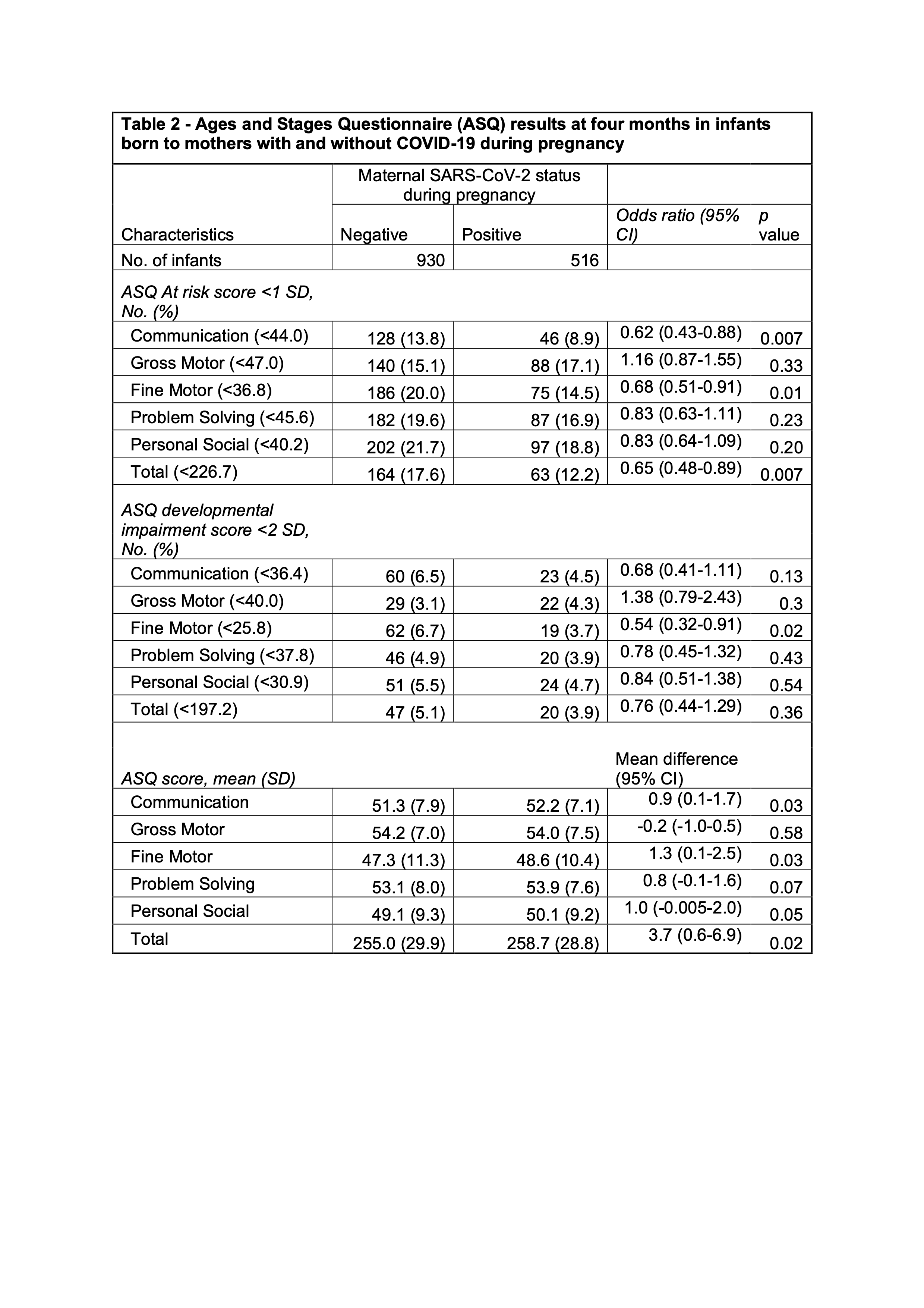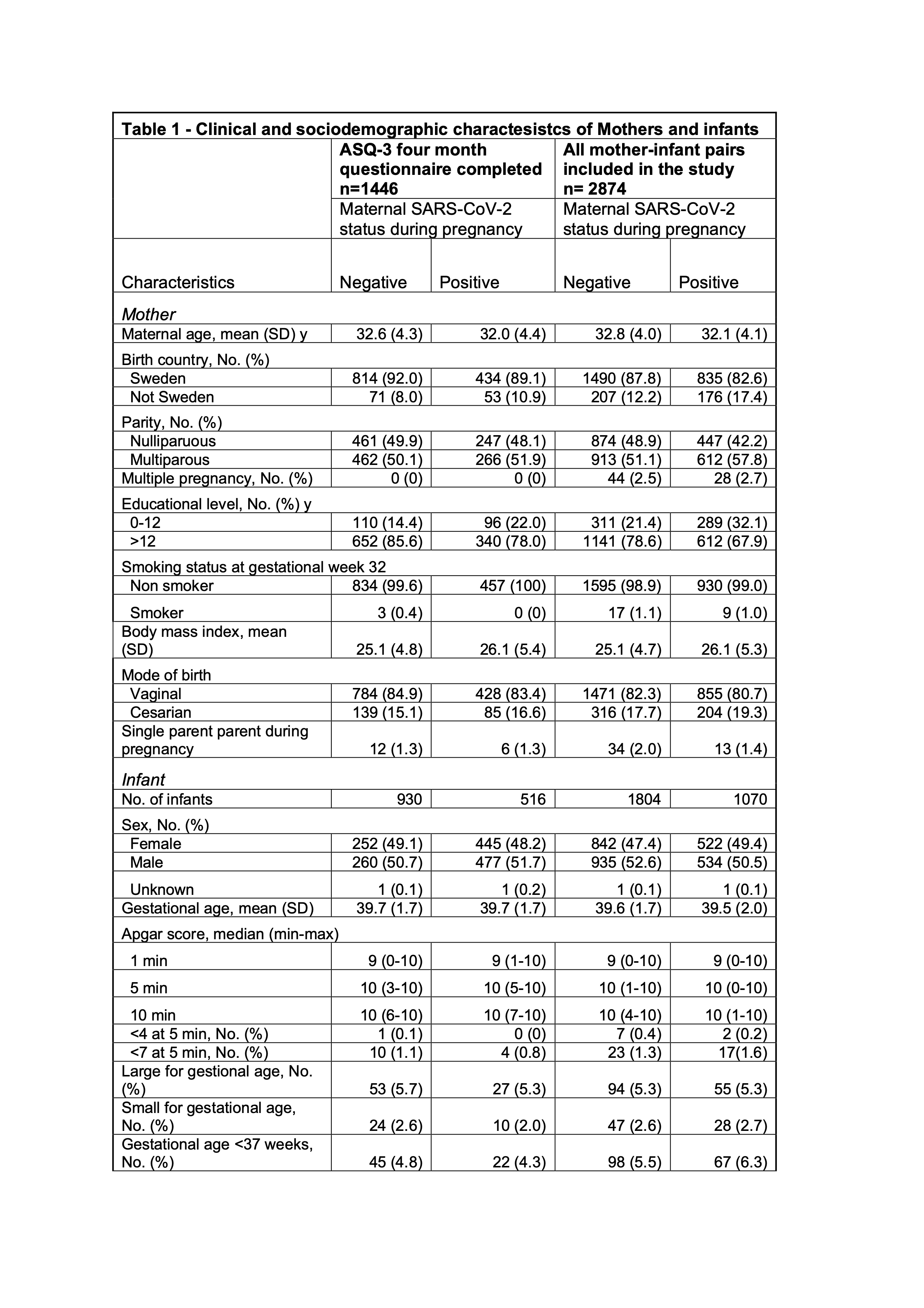Neonatology
Session: Neonatal Follow-up 3
529 - Assessing the Impact of SARS-CoV-2 Exposure during Pregnancy on Infant Neurodevelopment at Four Months of Age: A Prospective Multicenter Survey Cohort Study Conducted within the COPE Network
Monday, May 6, 2024
9:30 AM - 11:30 AM ET
Poster Number: 529
Publication Number: 529.3254
Publication Number: 529.3254

Ola Andersson, PhD, MD (he/him/his)
Associate professor
Lund University
halmstad, Hallands Lan, Sweden
Presenting Author(s)
Background: There is conflicting evidence regarding if SARS-CoV-2 exposure in pregnancy affects later infant neurodevelopment.
Objective: To assess if SARS-CoV-2 exposure in pregnancy affects parent-reported infant neurodevelopmental outcome at age four months measured by a web-based version of the Ages and Stages Questionnaire III (ASQ).
Design/Methods: Data was collected within the prospective multicenter Covid-19 during pregnancy and early childhood study (NCT04433364). Infants born to women ≥18 years with or without SARS-CoV-2 from conception until two days after birth (exposure), able to understand the study information were included between June 2020-December 2022. Ethical approval was obtained. Primary outcome: At risk for developmental impairment, defined as an ASQ total score < 1 SD of mean for the whole study population. Secondary outcomes: 1) At risk scores for the ASQ subdomains, 2) Developmental delay, defined as < 2 SD. Additional outcomes were collected from Swedish quality and health registers. Group comparison was analyzed by Student’s t-, or Chi2-test. Regression analysis was performed to adjust for confounding variables according to a predetermined model (Figure 1).
Results: In the full cohort of 2,874 included pregnancies, the ASQ four-month questionnaire was completed in 1,446 (50.3%) cases. SARS-CoV-2 positive mothers had a higher body mass index and lower levels of education compared to SARS-CoV-2 negative mothers. There were no clinically important differences in infant health outcomes.The group differences in health outcomes in the full cohort followed a similar pattern to the group differences in those who completed the ASQ questionnaire (Table 1).
Infants exposed to SARS-CoV-2 were less likely to have an ASQ total score < 1 SD compared to the unexposed infants in adjusted analyses Figure 1 (12.2% vs. 17.6%, adjusted odds ratio 0.51 [95% CI=0.32-0.80]). The same difference was seen in two of the five subdomains; communication, 8.9% vs. 13.8% (p=0.007) and fine motor, 14.5% vs. 20.0% (p=0.01). Fewer exposed infants had an ASQ fine motor score < 2 SD compared to unexposed infants, 3.7% vs. 6.7% (p=0.02). These main results are presented in Figure 1 and Table 2.
Conclusion(s): Infants exposed to SARS-CoV-2 in pregnancy had less risk for developmental impairment at age four months compared to unexposed infants. This unexpected finding might be explained by residual confounding. Further in-depth analyses as well as follow-up studies at older ages in this cohort are planned.


.png)
